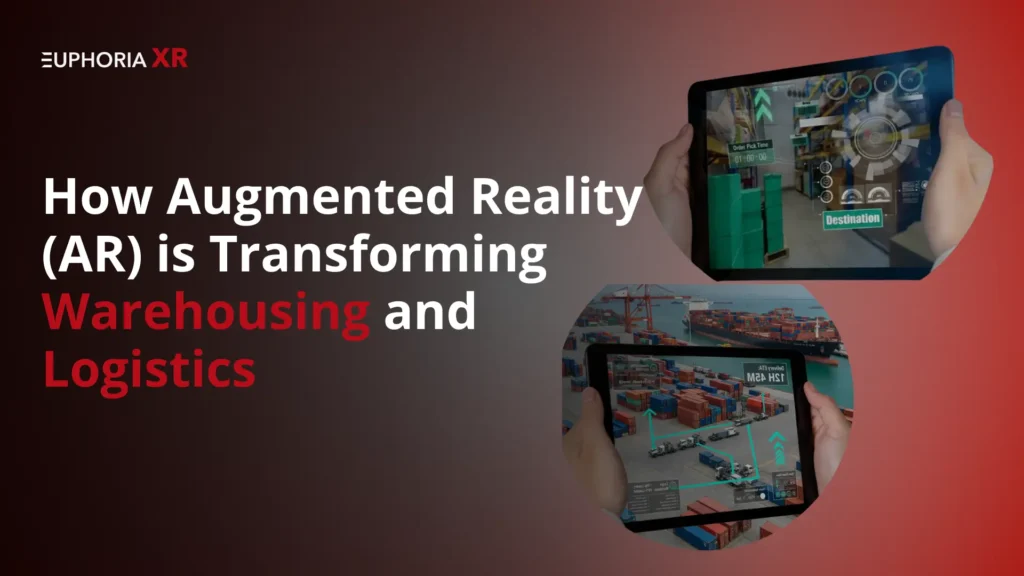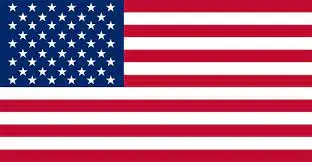Imagine Putting Clothes on Without Touching Them at All!
Imagine this: You do not even need to enter a fitting room to check how an outfit looks on you when you stroll into a store and grab your phone. Or perhaps a virtual mirror allows you to try on clothing in real-time while you are at home browsing an internet store. Augmented Reality in Fashion is reforming how we shop, try on, and interact with apparel.
Fashion firms are using augmented reality to improve consumer experiences, lower returns, and create interactive shopping spaces through everything from virtual fitting rooms to runway presentations driven by AR. However, what specific changes is augmented reality in fashion bringing about in the industry? And what difficulties does this invention present? Let us get started.
Augmented Reality (AR) in Clothing Use Case #1: AR Clothing Fitting
Customers can see how clothing fits on their bodies without actually trying them on thanks to augmented reality-powered virtual fitting rooms. Through the use of body scanning technology, these virtual fits provide a digital representation of the user wearing the chosen ensemble. Because size-related returns are frequent in online purchasing, this technique is very helpful.
Augmented Reality in Fashion Use Case #2: AR Mirror
Retail establishments are implementing AR-enabled smart mirrors that let clients virtually try on various ensembles. These Augmented Reality Mirrors superimpose digital apparel on the user’s reflection using depth sensors and motion tracking. This expedites the purchasing process, increasing its convenience and interactivity.
Augmented Reality in Fashion Use Case #3: AR Store
Customers can use AR to shop in a virtual setting in fully digital establishments. To eliminate the need for actual inventory, some firms are experimenting with AR pop-up stores, which allow customers to browse collections in an immersive, digital environment.
Augmented Reality in Fashion Use Case #4: AR Clothing Showcase
Customers can view a 3D, interactive model of an outfit by scanning a QR code or using an app, as an alternative to looking through static catalogs. This makes online purchasing more interesting by assisting buyers with visualizing textures, fabric movement, and color variations.
Augmented Reality in Fashion Use Case #5: AR Clothing Configurator
AR is being used by brands to let customers personalize their clothes in real time. Before making a purchase, customers can alter an item’s color, design, and even material, guaranteeing a customized shopping experience.
Augmented Reality in Fashion Use Case #6:Fashion shows
AR is being incorporated into runway presentations by major fashion brands. Viewers can see extra digital features, such as animations, outfit changes, or 360-degree views of clothing, through AR glasses or smartphone apps.
Augmented Reality in Fashion Use Case #7:Runway collections
Following fashion presentations, several designers are allowing virtual try-ons for their most recent collections. Customers can generate anticipation for future releases by using augmented reality apps to preview how the clothes appear on them.
Augmented Reality in Fashion Use Case #8:Brand narrative
Brands can produce captivating narrative experiences with AR. Consumers can learn about sustainable production practices, see behind-the-scenes content, or visually explore the brand’s history by scanning the label of a product.
Which Brands Use Augmented Reality in Fashion?
Fashion clothing is being reformed by augmented reality (AR), which helps brands improve the shopping experience, lower return rates, and engage customers in new and exciting ways. To stay ahead of the competition in the retail industry, several major fashion brands have already implemented AR clothing try-ons, virtual fitting rooms, and interactive showcases. Here are some of the most notable brands utilizing Augmented Reality in fashion clothing to change the way consumers shop.
1. Prada– Virtual Clothing Showcases for Luxury Shopping
To provide an interactive shopping experience, luxury brand Prada has incorporated augmented reality into its fashion apparel. Prada uses augmented reality to let customers:
Use AR-powered apps to virtually try on expensive fashion goods like coats, gowns, and suits.
Customers may see how outfits appear in real-world settings by using augmented reality (AR) to display digital apparel models in their surroundings.
Visit interactive fashion showcases to view digital previews of Prada’s most recent collections.
Prada’s adoption of AR makes luxury apparel more widely available by enabling clients to experience their unique designs without physically visiting a store.
2. Macy’s– AR-Powered Virtual Fitting Rooms
One of the first big-box stores to implement augmented reality clothes fitting technology was Macy’s. Customers may now digitally test on clothes without using actual changing rooms thanks to this invention. Among Macy’s AR initiatives are:
Smart mirrors at stores that let customers choose fashions on a screen to see several outfit variations.
AR-powered body scanning that uses a customer’s physical measurements to suggest the ideal fit.
The Macy’s AR shopping app uses mobile augmented reality technology to let online buyers see clothes on digital mannequins or their bodies.
Macy’s improves the shopping experience and lowers returns because of fit and size problems by making it easier to try on clothing.
3. Carolina Herrera – AR Showcases for Exclusive Clothing Collections
To create immersive client experiences, luxury fashion brand Carolina Herrera incorporates augmented reality into their garment designs. Among their AR characteristics are:
Interactive product displays allow consumers to watch digital fashion previews of designer gowns and runway ensembles by scanning QR codes.
AR-enabled catalogs that let customers use their cellphones to view 3D apparel models, fabric textures, and outfit permutations.
VIP AR experiences, where devoted clients can use virtual lookbooks to gain first access to new collections.
Carolina Herrera uses augmented reality to make high-end fashion buying more interesting and accessible to customers across the world.
4. Ralph Lauren– Virtual Try-On and Digital Styling
By providing virtual fittings and engaging product experiences, Ralph Lauren is pushing the boundaries of augmented reality in fashion apparel. Among their AR projects are:
Customers may try on Ralph Lauren’s iconic polo shirts, coats, and blazers virtually in dressing rooms enabled by augmented reality.
Snapchat AR filters allow users to view how Ralph Lauren clothes fit in real-time by superimposing them on themselves.
Customers can use augmented reality shopping software to view rich digital information, styling suggestions, and color variations by pointing their phones at a product.
Customers can purchase Ralph Lauren apparel with confidence thanks to this augmented reality integration, which connects online and in-store shopping.
5. The GAP– Dressing Room AR App for Virtual Clothing Try-On
One of the first companies to introduce augmented reality garment fitting technology was The GAP, which introduced DressingRoom by GAP, an app that simulates a fitting room and enables online consumers to:
They can view how various types of clothing fit them in real time by choosing a virtual model that corresponds with their body type.
To get a realistic look at how clothes fit and move, rotate and zoom in on ensembles from various perspectives.
Reduce the number of online order returns by using augmented reality to see ensembles before buying.
GAP guarantees that clients may choose the correct size and style with confidence by enhancing the interactive nature of online apparel buying, which lessens the inconvenience of returns.
6. Saks Fifth– AR Fashion Previews and Interactive Shopping
Saks Fifth Avenue is using augmented reality to improve customer interaction and product visibility in its designer apparel. The AR-powered experiences offered by Saks include:
Customers can scan clothing tags to view 360-degree views of designer dresses and other high-end clothes in AR-enhanced fashion previews.
AR-powered interactive virtual styling, in which customers’ preferences are used to recommend matching clothes, accessories, and styling options.
AI and AR-powered personalized shopping recommendations that make the best-fit recommendations based on body dimensions.
Saks provides a unique shopping experience that connects online and offline retail by utilizing augmented reality in luxury fashion.
7. Zara’s AR App– AR Shopping App for Real-World Clothing Try-Ons
The fast-fashion giant Zara is setting the standard for AR-powered retail by facilitating a smooth transition from online to in-store buying. Among Zara’s AR features are:
Customers can use the Zara AR App to view models wearing the clothes in real-time by pointing their phones at mannequins or clothing racks.
Customers may see animated augmented reality fashion shows in-store or online thanks to virtual fashion displays.
Dressing rooms with augmented reality capabilities let shoppers try on clothes contactless before making a purchase.
Zara’s use of augmented reality in fashion apparel speeds up, enhances, and personalizes the buying experience.
8. H&M: Get dressed in the metaverse
By entering digital fashion and the metaverse, H&M has embraced augmented reality in fashion apparel. Their AR projects concentrate on:
Using AR-powered technologies, customers may outfit their digital avatars in the newest H&M fashion collections.
H&M has introduced limited-edition digital clothing that can be worn in virtual worlds, gaming platforms, and social network avatars, bridging the gap between actual and digital fashion.
Targeting tech-savvy consumers and Gen Z Younger customers interested in digital fashion trends are drawn to the AR-powered experience.
H&M is establishing itself as a pioneer in metaverse-based fashion retail by fusing augmented reality and digital fashion.
Read Also: https://euphoriaxr.com/open-fashion-store-in-metaverse/
9. Burberry: Elevating the brand experience with AR
Burberry has created interactive brand encounters that increase client loyalty by incorporating augmented reality technology into its upscale retail experience. Among their AR-powered projects are:
AR-enabled social media filters that let buyers try on Burberry accessories, sunglasses, and trench coats before making a purchase.
Interactive augmented reality packaging allows users to access unique Burberry fashion content by scanning a product’s QR code.
AR shopping experiences, such as in-store AR mirrors and virtual try-ons of expensive clothing and handbags via Google Search.
Burberry has reformed digital luxury buying by enhancing the interactivity of high-end apparel.
10. Zalando: AR Try-On for Clothing
Zalando, an online fashion store, has improved online shopping experiences by utilizing augmented reality in fashion apparel. Among their AR tools are:
Customers can use virtual try-on technology to see how clothes fit a digital representation of themselves.
lowering return rates by making sure buyers select the appropriate fit and style before making a purchase.
Making fashion more engaging and individualized to improve online shopping.
Zalando’s AR-powered strategy increases online shoppers’ confidence, which results in more conversions and decreased return rates.
11. Lily: Virtual fitting room in non-store locations
By launching AR-powered virtual fitting rooms outside of conventional retail locations, Lily has elevated augmented reality in fashion apparel to a new level. Their distinct strategy consists of:
Installing AR fitting rooms to enable convenient clothing shopping in public areas, hotels, and airports.
Eliminating the need for physical fitting rooms by offering contactless clothing trials.
Increasing consumer access to fashion by making virtual try-ons available anywhere, at any time.
Lily is transforming where and how people shop for clothing by facilitating access to AR clothing trials.
12. Fendi: Maintaining relationships with loyal clients
To improve its relationship with VIP customers, luxury company Fendi has incorporated augmented reality into its design apparel. Among their AR-based projects are:
VIP clients can view new collections before they are made available to the general public through exclusive AR-powered fashion previews.
Individualized virtual styling sessions in which AR technology suggests ensembles according to past purchases and personal preferences.
Interactive fashion storytelling that uses augmented reality to give buyers a behind-the-scenes look at Fendi’s creation process.
Fendi increases brand loyalty and engagement with valuable clients by utilizing augmented reality to customize shopping experiences.
13. Adidas: Highlighting sustainability with AR
Adidas is educating customers about eco-friendly fashion and promoting sustainability through the use of augmented reality in fashion apparel. Among their AR-driven initiatives are:
Customers can scan clothing tags to discover more about the materials, manufacturing process, and carbon impact of Adidas items thanks to AR-powered sustainability awareness.
AR-enhanced shopping experiences that let users see how Adidas sources and designs its sustainable goods.
Environmentally responsible customer interaction, increasing the transparency and interactivity of sustainability.
Adidas is reaffirming its commitment to environmental responsibility by using AR to educate consumers about sustainable choices in addition to fashion innovation.
Suggested Read: https://euphoriaxr.com/top-augmented-reality-brand-experiences/
What are the Benefits of Using Augmented Reality in Fashion?
Improves Customer Experience: AR helps customers make better-informed selections by making shopping more dynamic and interesting.
Lowers Return Rates: By enabling customers to view how clothing fits before buying, virtual try-ons assist cut down on returns brought on by problems with size or style.
Boosts Sales and Conversions: When customers can more clearly see a product, they are more inclined to purchase it.
Enhances Brand Engagement: AR increases brand loyalty by keeping consumers interested for longer.
Supports Personalization: AR tools let users personalize their attire, which makes purchases better suited to each person’s tastes.
Addressing the Challenges and Limitations of Augmented Reality in Fashion
#1 Challenge of Augmented Reality in Fashion: Technical Challenges and User Accessibility
Challenge: Creating top-notch augmented reality experiences calls for sophisticated technology and knowledge. It might be challenging to guarantee that these experiences work on a variety of platforms and devices.
Solution: Fashion shops ought to spend money on strong augmented reality technologies that offer precise and practical product renderings. Virtual elements can be made to closely resemble their real-world counterparts in terms of color, texture, and scale by working with skilled AR developers and carrying out ongoing testing.
#2 Challenge of Augmented Reality in Fashion: Quality and Realism of AR Experiences
Challenge: Producing realistic and superior augmented reality apparel representations is crucial to ensuring client happiness. Customers may be discouraged from utilizing AR technology if the graphics are unrealistic or poorly produced.
Solution: Purchasing top-notch augmented reality technology guarantees accurate and lifelike product visualization. To guarantee that the virtual elements closely resemble their real-world equivalents in terms of color, texture, and size, this may include collaborations with skilled AR developers and ongoing testing.
#3 Challenge of Augmented Reality in Fashion: Privacy Concerns and Data Security
Challenge: Because AR apps frequently need access to private information like measurements and photos, consumers may be concerned about data security and privacy.
Solution: Privacy concerns can be reduced by putting strong data protection measures in place and being open about how data is used. It is essential to make sure that data protection laws are followed and to explain data policies to clients in an understandable manner.
#4 Challenge of Augmented Reality in Fashion: Integration with Existing Retail Systems
Challenge: It can be difficult to incorporate augmented reality (AR) solutions into retail infrastructures that are already in place, particularly for companies with well-established systems.
Solution: To create unique integrations that complement their present systems, retailers should collaborate closely with AR solution suppliers. This partnership minimizes interruptions to ongoing activities and guarantees a seamless installation procedure.
#5 Challenge of Augmented Reality in Fashion: Skepticism and Resistance to Change
Challenge: Because they are unfamiliar with or skeptical of the advantages of AR technology, some customers and organizations may be reluctant to embrace it.
Solution: One way to get past resistance is to educate employees and clients about the benefits of augmented reality in the fashion industry. Adoption can be accelerated by showcasing useful advantages, such as enhanced shopping experiences and lower return rates.
#6 Challenge of Augmented Reality in Fashion: Keeping Up with Rapid Technological Advancements
Challenge: Retailers find it difficult to maintain their AR experiences current due to the AR landscape’s continuous evolution.
Solution: Retailers should plan for frequent updates and keep up with the most recent advancements in augmented reality. They can guarantee that their AR solutions stay the best by collaborating with innovative AR developers.
#7 Challenge of Augmented Reality in Fashion: Scalability and Maintenance
Challenge: It can take a lot of resources to scale AR solutions to meet the needs of an expanding user base and to maintain the technology.
Solution: It is critical to allocate resources for continuous maintenance and plan for scalability early on. Effectively managing scalability and maintenance can also be facilitated by the use of cloud-based AR technologies.
Are you prepared to transform your industry? Collaborate with an Augmented Reality Development Company such as Euphoria XR for superior AR solutions.
How Does Augmented Reality in Fashion Enhance Customer Loyalty?
Creates a Unique Shopping Experience: AR gives fashion shopping a playful and inventive touch.
Promotes Brand Engagement: Consumers interact with AR experiences for longer periods, which deepens their bond with the brand.
Enhances Online Shopping Trust: Virtual try-ons help customers feel more confident about their purchases by lowering uncertainty.
The Future of Augmented Reality in Fashion
Anticipate seeing:
AI-powered virtual stylists- Suggesting clothes according to preferences and body types.
Fully immersive augmented reality stores-Customers can purchase in virtual worlds.
Social Commerce- Using social media apps to allow users to try on clothing directly.
Sustainability Initiatives-Using augmented reality to inform consumers about how their fashion choices affect the environment.
How to Develop an AR Fashion App
Establish Your Objectives: Choose whether you require an augmented reality (AR) fitting room, virtual store, or interactive shopping experience.
Select the Appropriate AR Technology: Make use of tools like Google’s ARCore or Apple’s ARKit.
Create an intuitive user interface: Guarantee a consistent experience across all devices.
Integrate with E-Commerce: To enable direct purchases, link your augmented reality app to internet retailers.
Test and Optimize: Make constant improvements in response to consumer input.
Need a custom Augmented Reality(AR) solution for your brand?
Final Thoughts!
In the fashion industry, augmented reality is a revolution rather than a trend. AR-enabled brands are recasting the shopping experience, boosting customer engagement, and boosting revenue. Even though there are obstacles, the possibilities greatly exceed the disadvantages.
The future of retail will continue to be shaped by augmented reality in fashion as technology advances. One thing is certain, whether you are a brand or a consumer: AR is permanently altering the fashion industry.

















